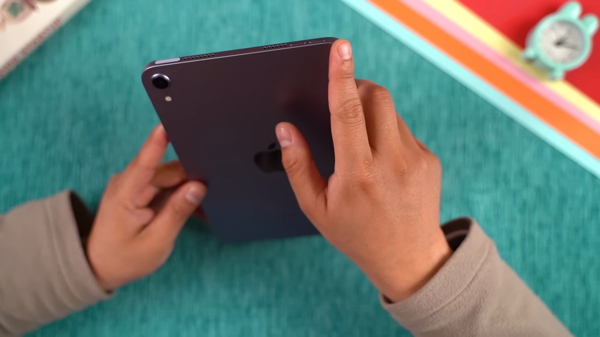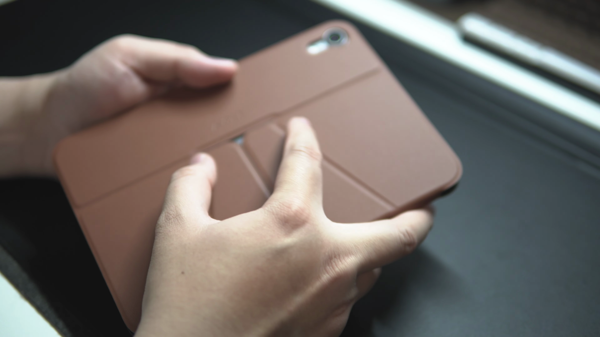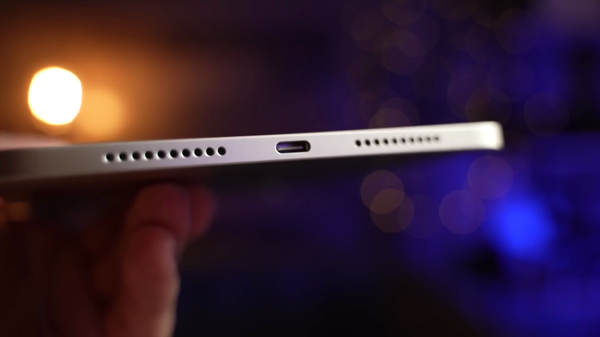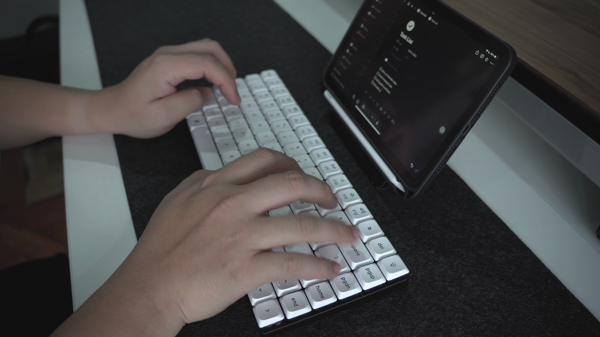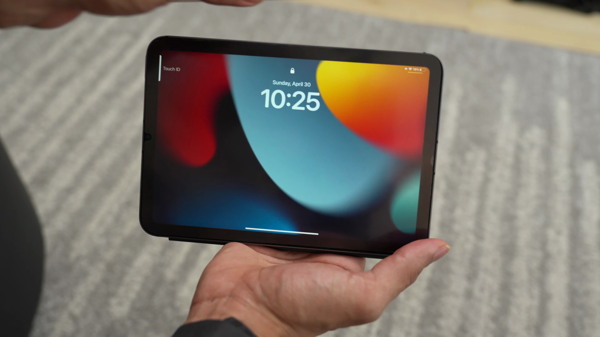Note: As an Amazon Associate we earn from qualifying purchases.
What I hope the iPad Mini will bring in 2024
Introduction
I’ve been tracking the evolution of Apple’s iPad Mini for a while. The balance between affordability and cutting-edge features has always been quite good on this device. Yet, my wish list is long, coming down to display enhancements, performance boosts, and reasonable pricing.
Prices
Check prices of the iPad Mini 6 on:
Photos
Click on photos to enlarge them:
Hopes for Display and Design Improvements
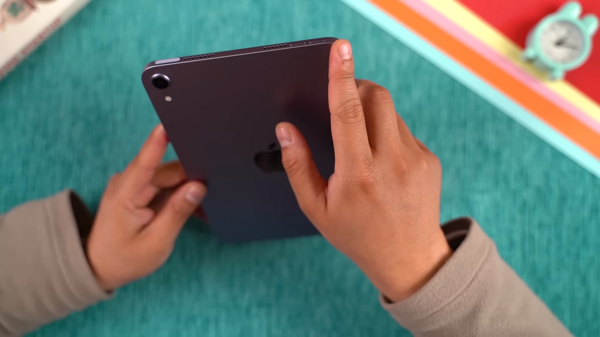
As someone who’s deeply entrenched in both the tech and design aspects of consumer electronics, I find the rumors around the next iPad Mini’s display and design characteristics quite intriguing. I want to lay out my expectations and hopes for the upcoming device:
Improved Refresh Rate: The jump to a higher refresh rate, ideally ProMotion technology with a 120Hz refresh rate, would make for a much smoother visual experience. Scrolling through web pages and documents should feel seamless, a stark contrast to the current 60Hz display that feels outdated compared to other devices in the market, and even some budget-friendly Android tablets.
Reduced Jelly Scrolling: The jelly scroll effect is a minor annoyance I’ve noticed; orientation-based tweaks should minimize it. Yet, if the refresh rate is improved, this issue should be mitigated anyway.
Design Uniformity: The aspect ratio choice is crucial. A return to the classic 4:3 ratio could provide more screen real estate while maintaining the device’s signature compactness.
Color Options: I look forward to the rumored new color options. The aesthetic of a device plays a big part in the user experience, and more choices allow for a more personalized feel.
Here’s a quick breakdown:
Pros:
Higher refresh rates for smoother interaction.
Minimized jelly scrolling for a more consistent display.
More color options for personalization.
Cons:
Potential increase in price due to higher specs.
Battery life might take a hit with higher refresh rates unless optimized.
In terms of the overall design, I’m keen on seeing a more robust speaker system. Given that the iPad Mini is often used for media consumption, sound quality shouldn’t be an afterthought. MagSafe 3 integration would also be a welcome addition for a streamlined charging experience, which would consolidate my various Apple devices even further.
On the aspect of Face ID integration, I have mixed feelings. While it adds convenience, I’m drawn to the affordability that Touch ID provides. Balancing cost and tech is always tricky, but necessary for a non-Pro device.
Looking at the bigger picture, an OLED or Liquid Retina XDR display would be the pinnacle for the iPad Mini series. However, I understand this might be a step too far for a device that’s not in the “Pro” category and could dramatically affect the price.
In summary, I hope Apple takes a balanced approach with the iPad Mini later in 2024, improving display quality and design without compromising too much on cost-effectiveness. Given the tight competition in the tablet market, they need to strike the right chord to keep the Mini relevant and attractive to consumers.
Performance and Software Enhancements

When pondering the potential performance and software enhancements for the upcoming 2024 iPad Mini, I’ve got a few speculations and hopeful expectations. Given my experience with Apple products, I’m optimistic yet hold a grain of salt for any letdowns, particularly regarding the following aspects:
Chipset Advancements: The current rumblings point towards an A16 Bionic chip, and I’m keeping my fingers crossed for an A18, paralleling the iPhone 16’s probable advancements. The leap in processing power would be substantial and could ideally present a noticeable uptick in efficiency and app performance. More importantly, this could bring about an enhanced gaming experience, allowing the Mini to handle console-quality games with greater finesse.
Software Refinements: Moving to the software side, I expect the latest iPadOS to be more refined and touch on multitasking capabilities. In discussing professional workflows, it’s interesting to highlight the potential in something like analyzing data using Python on an iPad, which brings to mind an introduction to using Polars in Python, a performant data analysis library. A hope for a sturdier bridge between macOS and iPadOS might not be farfetched, aiming for seamless integration particularly in these workflows.
Here’s a breakdown of what I’m hoping to see, specifically:
Processing Power:
A16 Bionic or higher: A crucial step up for the Mini’s heartbeat.
Capability to run console-grade games: Potentially attracting a broader gaming audience.
Software Experience:
Enhanced multitasking features: To rival or perhaps surpass the flexibility of traditional computers.
Improved app integration: For a smoother transition between different Apple ecosystems (Mac, iPhone).
I’m also particularly keen on how Apple will optimize the software to harness the raw power of new hardware efficiently. An Apple device isn’t just about the specs; it’s about how gracefully the software dances with the hardware. As such, the upcoming iPadOS needs to push the boundaries of what a “mini” tablet can do, balancing power and portability.
However, I must acknowledge and stress that for those who’ve sworn by the iPad Mini as their daily driver, raw specs alone won’t justify an upgrade. The actual improvements need to be tangible in day-to-day usage, whether that’s in swiping through pages fluidly, booting up AR applications or tackling heavy design projects.
The keynote here is that while the neural engine and GPU improvements linked to an A16 chip can deliver marvelous performance leaps, the software needs to translate these into real-world enhancements that benefit the end-user.
In conclusion, albeit not quite closing the article, I remain hopeful yet level-headed about Apple’s delivery for the next iPad Mini. It’s about how the device feels in the hand, both literally and figuratively - the swiftness, the response, the intuitiveness, all of which hinge on the harmony of hardware and software. I eagerly await seeing these advancements materialize and genuinely wonder what boundary Apple will push next.
Battery Life and Pricing Expectations

When considering the next iteration of Apple’s iPad Mini, set to debut in 2024, two factors weigh heavily on potential buyers’ minds: battery life and pricing. Given Apple’s track record, as discussed in my reflections on Apple’s new M2 Ultra chip, efficiency and power management will likely be key components of any new design. Traditionally, the Mini line has been prized for its portability, but with that, some sacrifices have been made, notably in the battery capacity department.
From my perspective, battery life is a non-negotiable aspect of a device meant for on-the-go usage. There’s an expectation for improvement here, resting on the presumption that advancements in battery technology should trickle down to even the more compact devices of Apple’s lineup. However, the compact form factor of the Mini does pose inherent limitations; you simply can’t fit a massive cell into that small chassis. Still, I’ve seen enough incremental improvements in battery tech to be cautiously optimistic that the next iPad Mini will have a longer lasting battery, ideally pushing closer to the 10-hour mark acclaimed in larger iPad models.
Onto pricing, which is always a delicate subject. We’re all too aware of the premium Apple attaches to its devices, and the iPad Mini is no exception. Given the updates we’re expecting, like potentially improved cameras and chip upgrades, a price hike wouldn’t be entirely surprising. However, the question is how much is too much?
Pros:
Potentially faster A16 Bionic chip.
Upgraded camera could enhance content creation.
Wi-Fi 6E and Bluetooth 5.3 for better connectivity.
Any mitigation of the jelly scroll effect would be a welcome tweak.
Cons:
If significant improvements in battery life are not realized, the device’s portability value decreases.
A steep price increase could alienate the budget-conscious users who find the Mini’s current price point appealing.
The lack of a more substantial update might not justify the upgrade for current Mini 6 users.
Given these factors, I’d predict a moderate price increase, aligning with historical trends in tech device pricing. If Apple manages to equip the Mini with features like MagSafe, a technology that’s currently well-established in the iPhone ecosystem, that might soften the blow of a price increase for me. But if pricing veers into the territory where you’re nearing the cost of an iPad Air with arguably better features, that could become a serious sticking point.
Final thoughts: the iPad Mini holds a unique place in the tablet market with its combination of size and power. The 2024 Mini needs to finesse the delicate balance of enhancing battery life without a substantial price increase. Should Apple manage this, they will again validate the Mini’s position as the go-to high-powered compact tablet. If they miss the mark, it might prompt users like myself to explore alternatives, or wait it out until a more substantial update comes our way.
